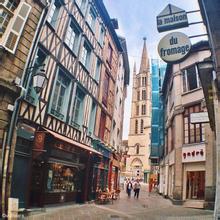Costa Rican Coffee Bean Baking Review Flavor description introduction to the Origin of texture Grinding Calibration treatment
Costa Rican Coffee Bean Baking Review Flavor description introduction to the Origin of texture Grinding Calibration treatment
The strict management of Laminita Farm in Tarazhu production area has established a world-class reputation and is popular in European and American markets for most of the century. It can be called a world-famous coffee farm. Lamini Tower means "small gold mine". Before the Spanish colonization, the Indians used to dig gold in the present farm location, which can be described as a blessed land. Raminita produces about 1 million pounds of coffee beans a year, and after selection to remove defects (more than 70% eliminated), only 290000 pounds of high-end products are sold to the boutique market, which is not a false name. The coffee of Gai Manor is famous for its sour aromas of apple and citrus, rich milk and truffle, and delicate taste of silk, about 1200-1700 meters above sea level. In addition, Sanhe District is also a famous producing area. The Yilazhu volcano and rivers not far to the east of the capital form an excellent microclimate zone, but in recent years, the urban area has gradually extended to the suburbs, and agricultural land has been sold to developers, resulting in a sharp decline in coffee production in Sanhe area. the output is almost half of which is contracted by Starbucks, and it is not easy for the industry to buy. Aquez Grass, a well-known farm in this area, has persisted since 1857. It has a long history, bright acidity, soft acidity, nuts, flower-scented taffy, sweet and charming, which are the characteristics of coffee in this area.
Because of the coffee industry, Costa Rica is a more advanced profession. Coffee farmers have a high status in Costa Rica. In 1897, citizens of the capital witnessed the completion of the National Theater donated by coffee tycoons. Coffee wealth brings stability to Costa Rica's politics, economy and democracy, which is rare in Central American countries. In addition, Colombia has a law that only allows the planting of Arabica, and Robasta is a "contraband" in its territory, which is also the only initiative seen in the world.
Costa Rica mostly uses washing treatment, and in recent years there has also been an alternative half-sun treatment (Miel) or Honey Coffee, which can be translated as "as sweet as honey" treatment. The coffee that Costa Rica claims to be "as sweet as honey" is Honey Coffee on the sack, which is quite eye-catching. It has improved the Brazilian half-sun method to increase sweetness, focusing on keeping the pectin layer glued to the pods as completely as possible, removing the peel and moving the sticky pods to an outdoor viaduct, similar to Kenyad's practice, so as not to absorb the odor and moisture of the land, then expose to the sun and air-dry for about a week or two. During this period, you have to turn the pods every hour to make them evenly dry, so that the beans can fully absorb the fruit aroma and sugar essence of the thick pectin layer, and put them into wooden containers to ripen after dehydration.

Important Notice :
前街咖啡 FrontStreet Coffee has moved to new addredd:
FrontStreet Coffee Address: 315,Donghua East Road,GuangZhou
Tel:020 38364473
- Prev

The difference between the flavor of sun-dried beans and water-washed beans-the flavor of sun-dried Yega Chuefei coffee
The difference between the flavor of sun-dried beans and water-washed beans-sun-flavored coffee beans: each fruit contains 2 coffee beans (except for a single pod bean Peaberry. The fruit of this kind of coffee contains only one coffee bean. Normally, 5% of each batch of coffee beans is a single pod. Coffee beans can be roasted after drying and treatment. Both products will have.
- Next

Description of taste and flavor of Latin American coffee beans introduction of varieties produced by grinding scale
The characteristics of Latin American coffee beans taste and flavor description grinding scale production area variety introduction Peruvian coffee before the introduction is not common in the world, it is generally considered that its treatment process is hasty, so the evaluation is not good, this is the result of previous state monopoly. In fact, Peruvian coffee has good growth conditions, and many of them are grown organically, so the quality of coffee beans has always been quite good. Peruvian coffee
Related
- Detailed explanation of Jadeite planting Land in Panamanian Jadeite Manor introduction to the grading system of Jadeite competitive bidding, Red bid, Green bid and Rose Summer
- Story of Coffee planting in Brenka region of Costa Rica Stonehenge Manor anaerobic heavy honey treatment of flavor mouth
- What's on the barrel of Blue Mountain Coffee beans?
- Can American coffee also pull flowers? How to use hot American style to pull out a good-looking pattern?
- Can you make a cold extract with coffee beans? What is the right proportion for cold-extracted coffee formula?
- Indonesian PWN Gold Mandrine Coffee Origin Features Flavor How to Chong? Mandolin coffee is American.
- A brief introduction to the flavor characteristics of Brazilian yellow bourbon coffee beans
- What is the effect of different water quality on the flavor of cold-extracted coffee? What kind of water is best for brewing coffee?
- Why do you think of Rose Summer whenever you mention Panamanian coffee?
- Introduction to the characteristics of authentic blue mountain coffee bean producing areas? What is the CIB Coffee Authority in Jamaica?

